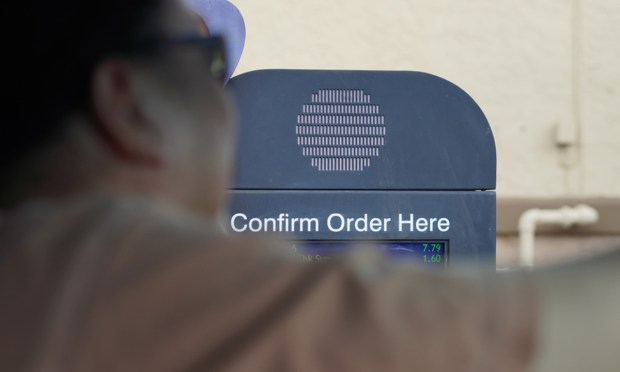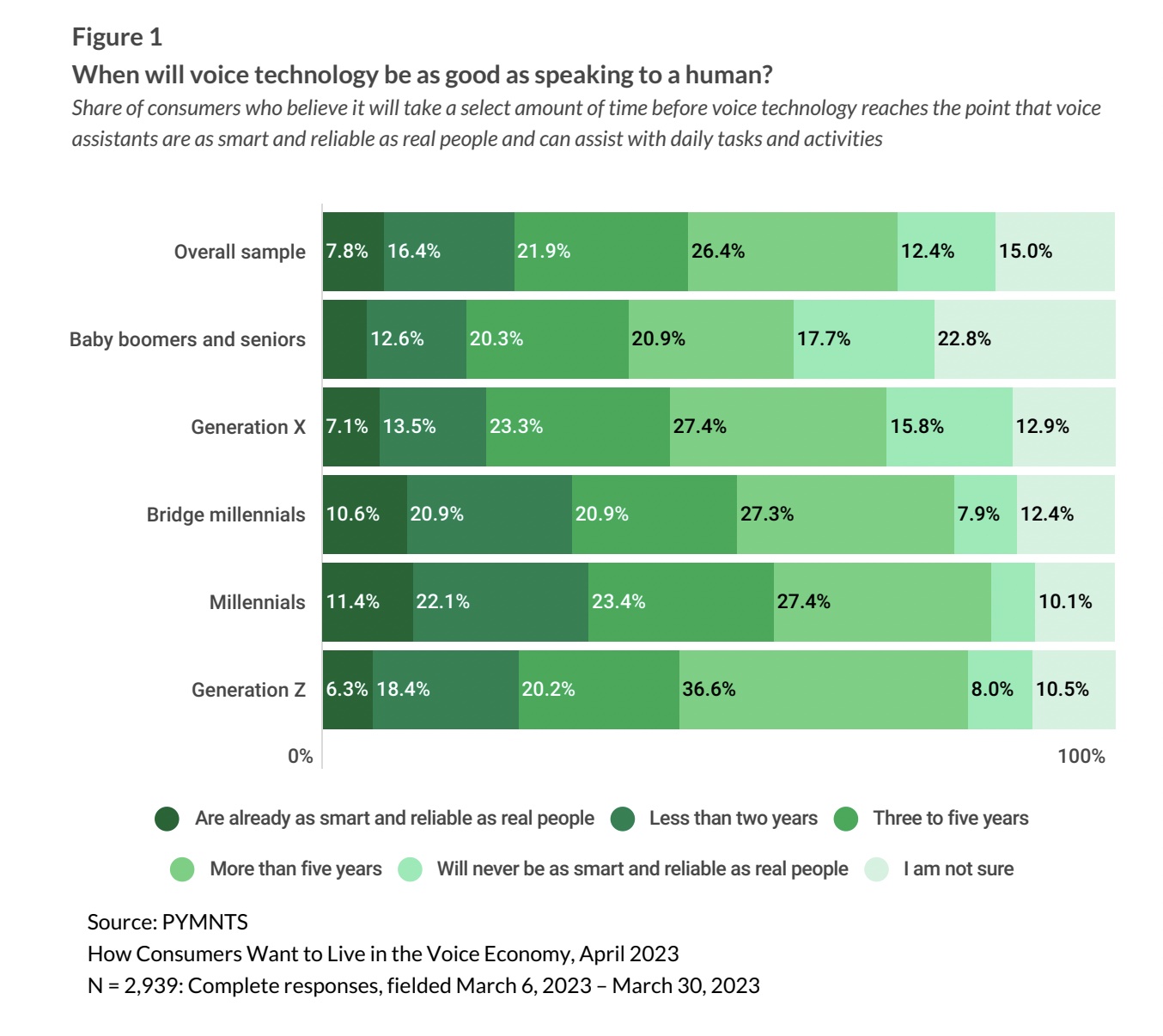
Quick-service restaurants (QSRs) are increasingly integrating voice artificial intelligence (AI) into the ordering process, but PYMNTS Intelligence shows most consumers believe it will be a long time before the technology can provide a better experience than interacting with a human.
The PYMNTS Intelligence report “How Consumers Want To Live In The Voice Economy” draws from a survey of more than 2,900 U.S. consumers to better understand how they use voice technology today, the friction they face and what they expect from these technologies in the future.

The results reveal that most consumers think voice technology is a long way away from rivaling the experience of person-to-person service. Just 8% believe that voice assistants are as smart and reliable as real people and can assist with daily tasks and activities as well as humans, and only another 16% believe the technology will get there within the next two years.
Conversely, 22% of consumers believe it will take three to five years, 26% think it will take more than five years, and 12% believe the technology will never be as smart and reliable as real people.
QSRs ranging from White Castle to Wendy’s to Del Taco are trying out voice AI.
The technology is becoming more widely available for restaurants. For instance, leading U.S. restaurant aggregator DoorDash is adding voice AI to its white-label offerings, as the company announced in August.
“Supporting operators by capturing customer demand through investments in our voice product is one way we’re delivering more and enabling our partners to grow their business,” DoorDash Head of Product and Design Rajat Shroff said in a statement.
In an interview with PYMNTS, Aaron Nilsson, chief information officer at the Jet’s Pizza, discussed customers’ positive experiences with voice order-taking AI technology, even when they know they are speaking to a robot.
“The voiceover is communicating that it’s a robot,” he said. “We didn’t want to hide that in any way. … One really delightful thing that I hear on occasion when we pull recordings from this is that, at the end of calls, frequently, customers will say, ‘Thank you.’ That is inherently a human-to-human thing. … They’re having an interaction that’s human-like.”